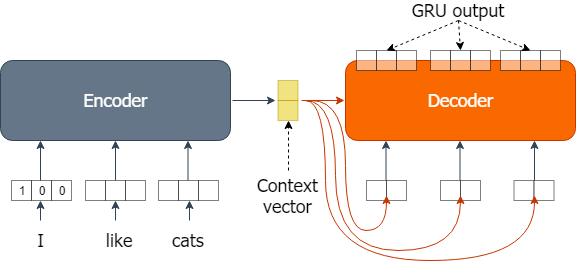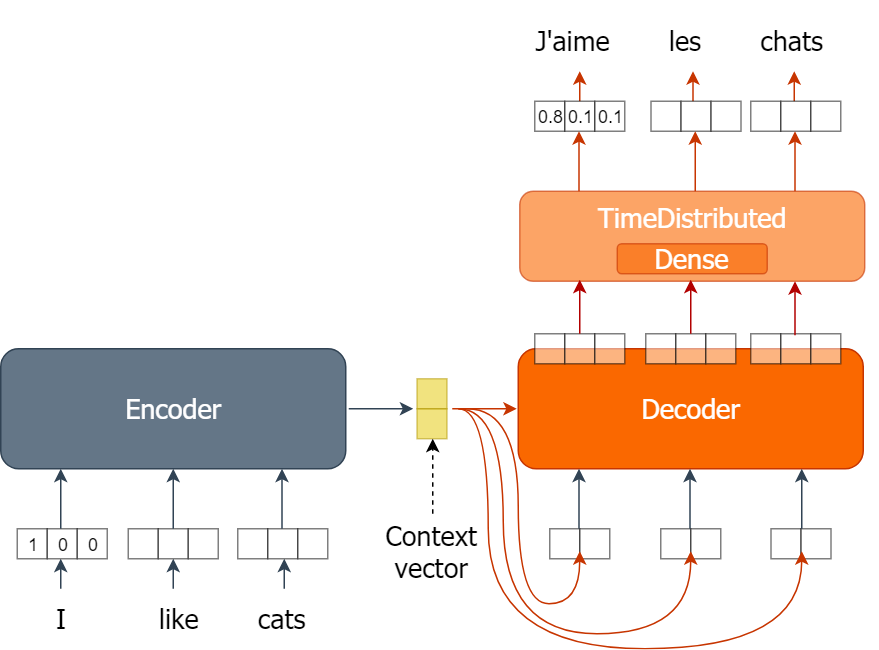Implementing the full encoder decoder model
Machine Translation with Keras

Thushan Ganegedara
Data Scientist and Author
What you implemented so far
- The encoder consumes the English (i.e. source) input
- The encoder produces the context vector
- The decoder consumes a repeated set of context vectors
- The decoder outputs GRU output sequence

Top part of the decoder
- Implemented with
TimeDistributedandDenselayers.

Implementing the full model
Encoder
en_inputs = Input(shape=(en_len, en_vocab)) en_gru = GRU(hsize, return_state=True) en_out, en_state = en_gru(en_inputs)Decoder
de_inputs = RepeatVector(fr_len)(en_state) de_gru = GRU(hsize, return_sequences=True) de_out = de_gru(de_inputs, initial_state=en_state)
Implementing the full model
- The softmax prediction layer
de_dense = keras.layers.Dense(fr_vocab, activation='softmax')
de_dense_time = keras.layers.TimeDistributed(de_dense)
de_pred = de_seq_dense(de_out)
Compiling the model
Defining the full model
nmt = keras.models.Model(inputs=en_inputs, outputs=de_pred)
Compiling the model
nmt.compile(optimizer='adam', loss='categorical_crossentropy', metrics=['acc'])
Let's practice!
Machine Translation with Keras

